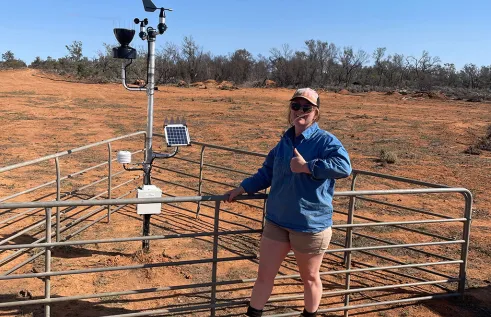Research impact
How Sigit is shaping Indonesian environmental policy

There’s nothing more compelling to a researcher than knowing their work will have a real-world impact in an area of true significance. This is the case for international higher degree by research (HDR) student, Sigit Sasmito. His research project into the impact of human behaviour on mangrove forests is set to define environmental policy for his home country of Indonesia. Adding further proof that CDU's HDR students are doing research with real influence, one of Sigit’s thesis chapters was recently published in Global Change Biology; one of the world’s most-respected journals in environmental science.
Sigit was born and spent his teenage years in a small village in Banyuwangi of East Java province, Indonesia. As a young adult, he moved to West Java to complete his undergraduate degree and land his first job as a Research Assistant at Indonesia-based Center for International Forestry Research, where his passion for wetland ecosystem research blossomed.
“The value of tropical ecosystems in developing countries, such as Indonesia, is often overlooked because there are more immediate priorities to be addressed, such as poverty and access to education and health services,” Sigit said.
Making a real impact
Sigit wanted to further his research career in this field with the hope to make a real change in the environmental management practices of his home country. He applied and was accepted as an HDR student at CDU’s Research Institute for the Environment and Livelihoods (RIEL), based in Darwin.
“RIEL is one of world’s best institutes in my field, particularly in developing the understanding of the man-made impacts to our ecosystems,” Sigit said.
“I hope that my work will contribute to improving science-based policy in Indonesia, specifically for climate and environmental policies.”
Sigit’s research focus is assessing the potential of blue carbon – the carbon stored in coastal and marine ecosystems – at one of world’s largest mangrove areas located in West Papua province, Indonesia. It’s through this project that he is also assessing the potential impacts of carbon emissions in response to deforestation and land conversion.
“My research project involves investigating mangrove blue carbon dynamics in response to land use and land cover changes,” Sigit said. “Mangrove forests are subject to large-scale degradation, mainly as a result of deforestation and conversion into other land use.”
Sigit said blue carbon ecosystems, including mangroves, saltmarshes and seagrasses, are globally important, sequestering significant volumes of organic carbon.
“Mangrove forests contain five times more carbon stocks compared to other types of terrestrial forests,” Sigit said.
“However, once they’re deforested and converted, they could generate large amounts of carbon emissions, amplifying global warming and climate change. Stopping further mangrove deforestation by having improved mangrove conservation management is significant for easing climate change.”
It’s Sigit’s hope that his research findings will directly contribute to the climate policy in Indonesia, particularly supporting science-based policy for national carbon emissions reduction targets. He also hopes that findings from his research will contribute to mangrove conservation management and strengthen the understanding of the potential role mangrove forests play in global climate change mitigation and adaptation.
As a CDU HDR student, Sigit said he’s had the opportunity to expand his research into the international community and connect with researchers who have similar research interests to him from across Australia and the world.
Find out more about the incredible work Sigit is doing by reading his thesis chapter in Global Change Biology*.
Join a research community that delivers real-world and measurable impact in Northern Australia and the Asia Pacific. Explore opportunities to study a higher degree by research at CDU.
*Sasmito SD, Taillardat P, Clendenning JN, Cameron C, Friess DA, Murdiyarso D, Hutley LB. 2019. Effect of land‐use and land‐cover change on mangrove blue carbon: A systematic review. Global Change Biology. 00:1–12
Related Articles

Following the flock: Samantha’s research could revolutionise water point placement
When Samantha first moved to South Australia's harsh outback, she was confronted by what she saw.
"Having recently moved to arid pastoral South Australia, I was struck by the hot, dry climatic conditions," she says. "I found myself questioning what made these landscapes so resilient, how livestock production could thrive in such conditions and whether this relationship was truly sustainable."
Read more about Following the flock: Samantha’s research could revolutionise water point placement
The NT inspired Kate to become an environmental scientist
A road trip around Australia sparked a huge career change for Kate. The recent Bachelor of Environmental Science graduate switched gears from real estate to environmental science after falling in love with the uniqueness of the Northern Territory.
Read more about The NT inspired Kate to become an environmental scientist
Julia's unexpected road to species-saving research
Julia is researching sharks and rays here in the Top End at Charles Darwin University, a world away from her upbringing in north-western NSW. She's working to ensure some of Australia's most threatened species are around for many generations to come.
Read more about Julia's unexpected road to species-saving research

